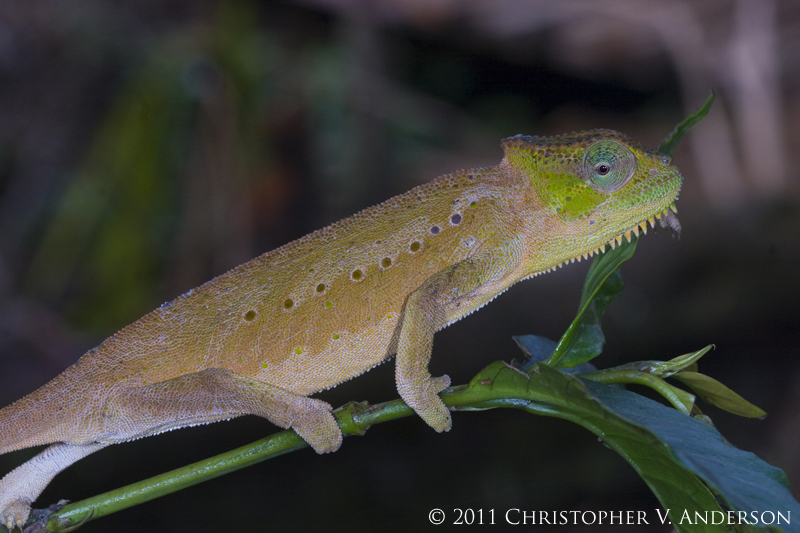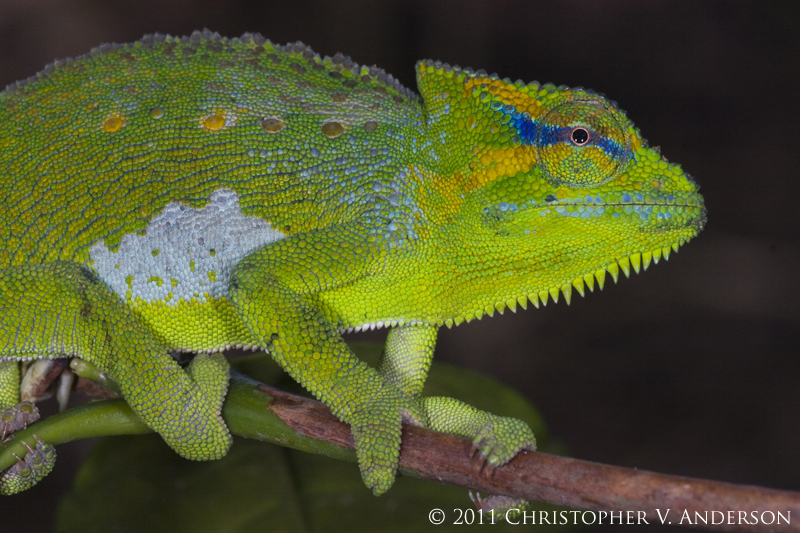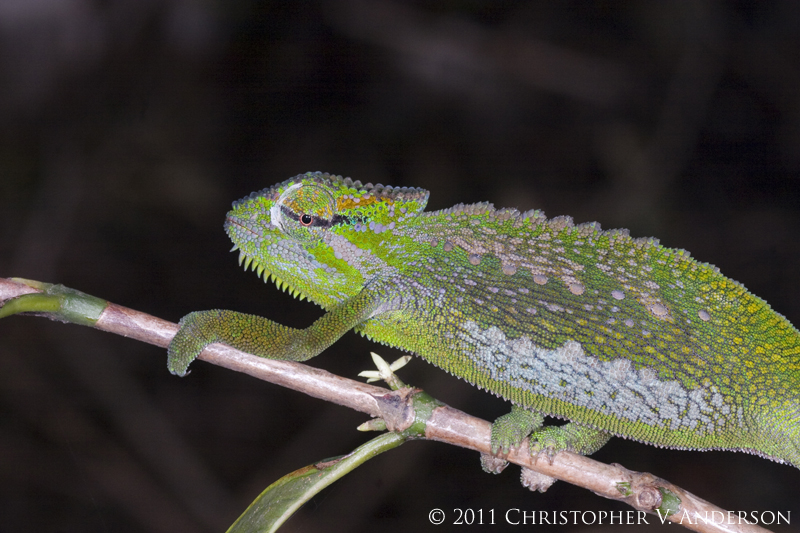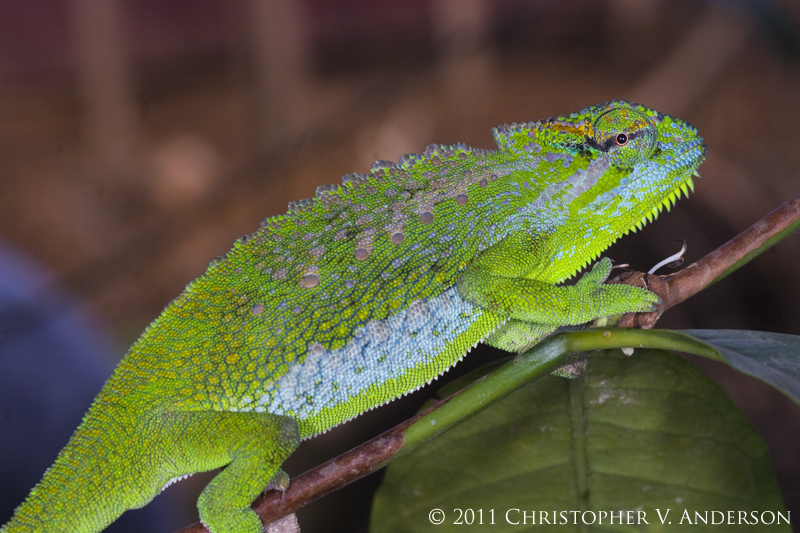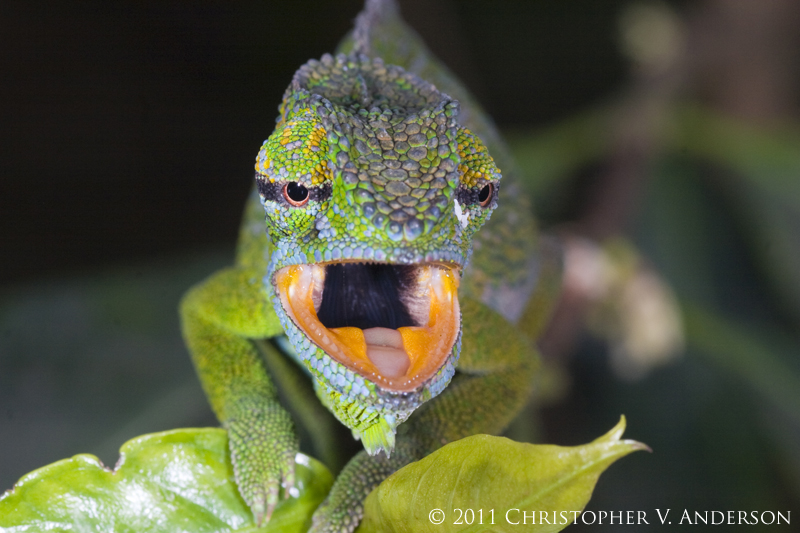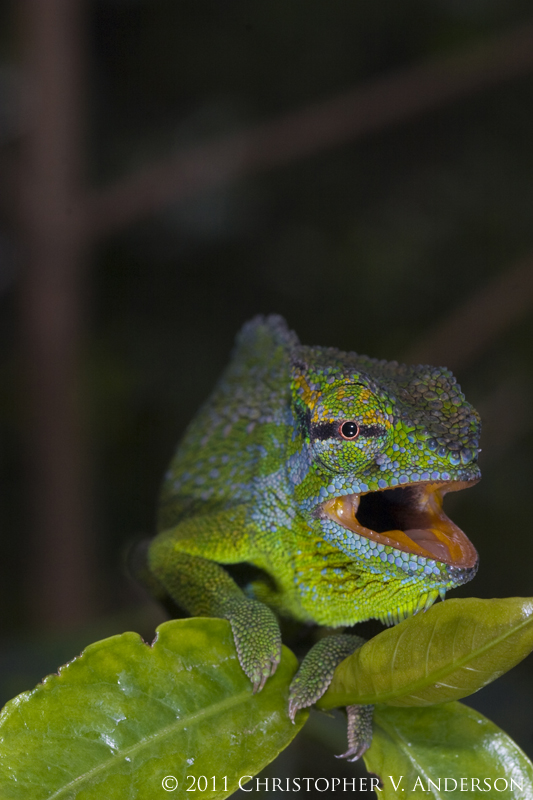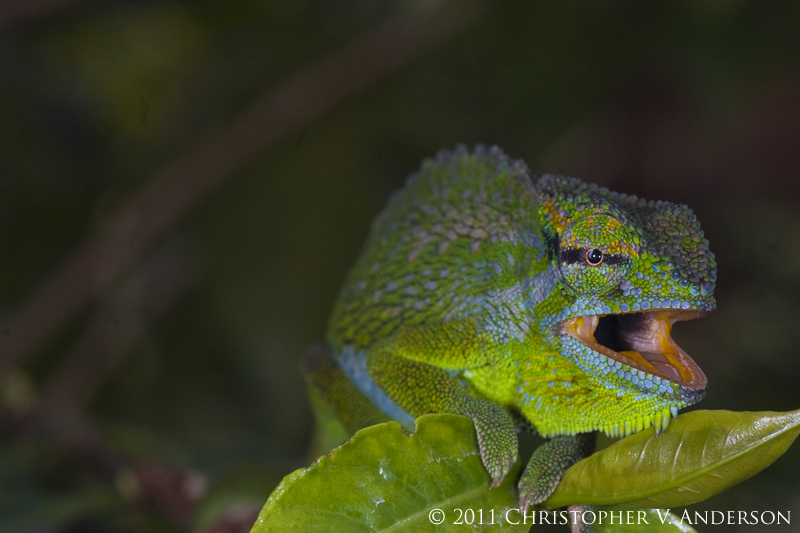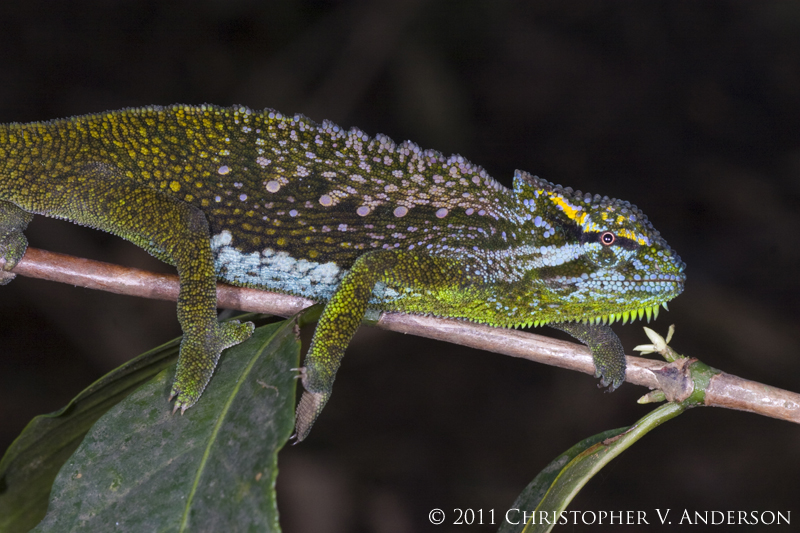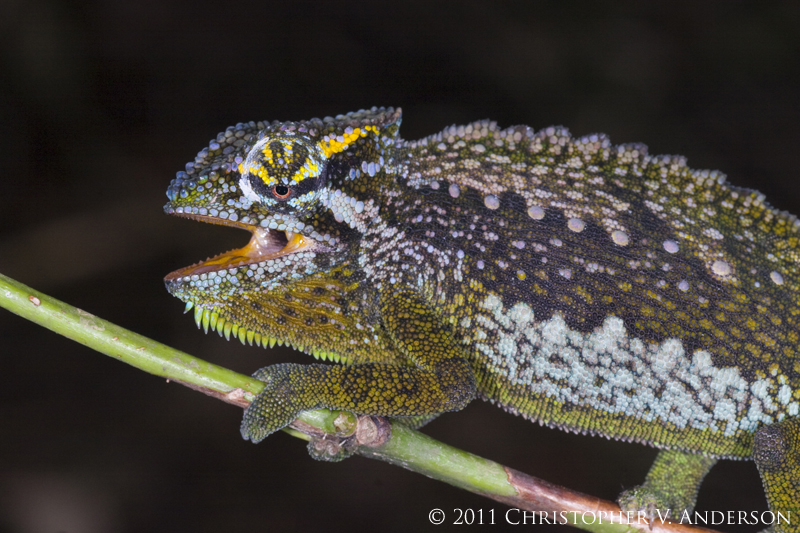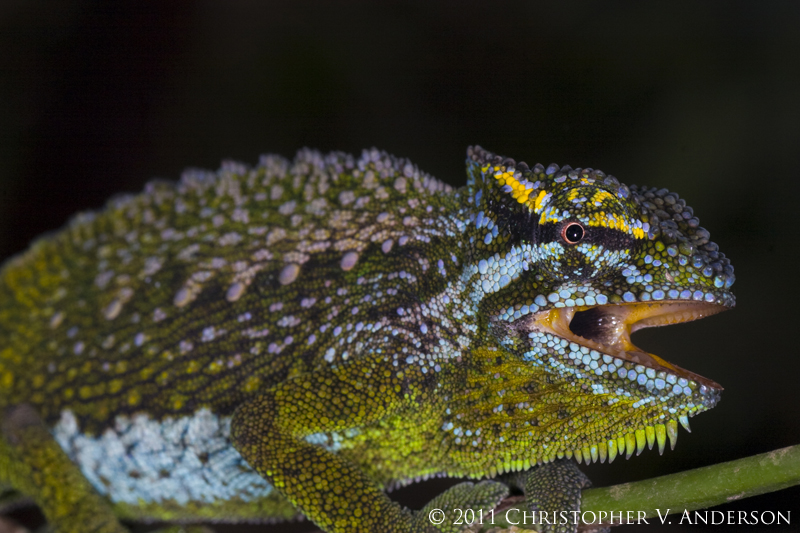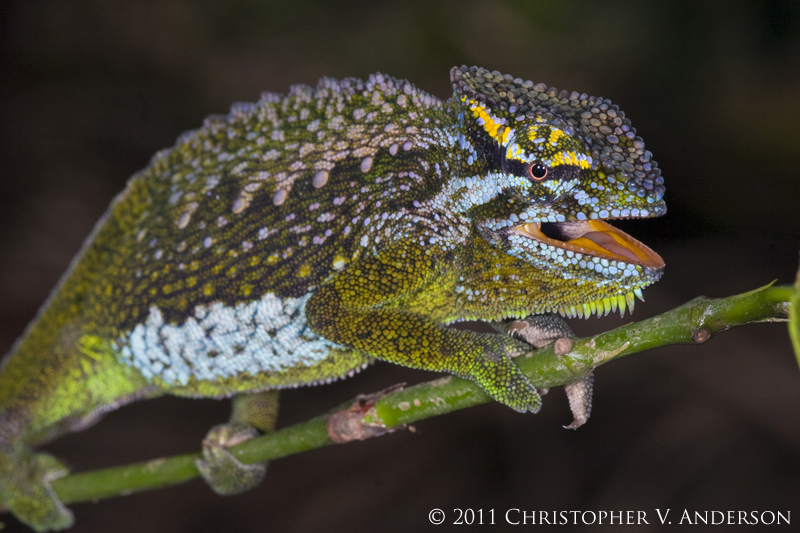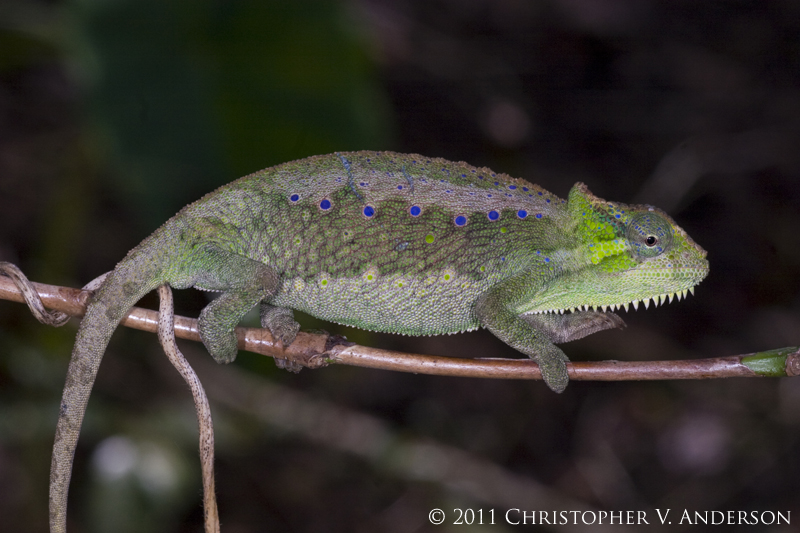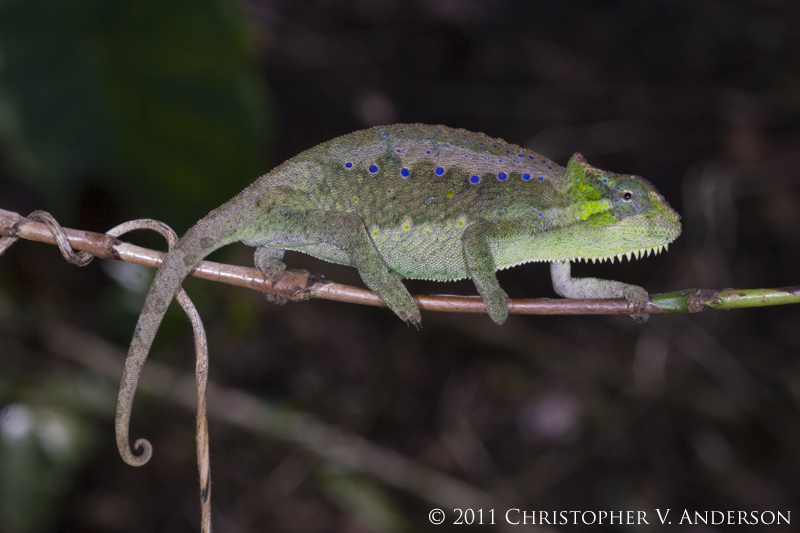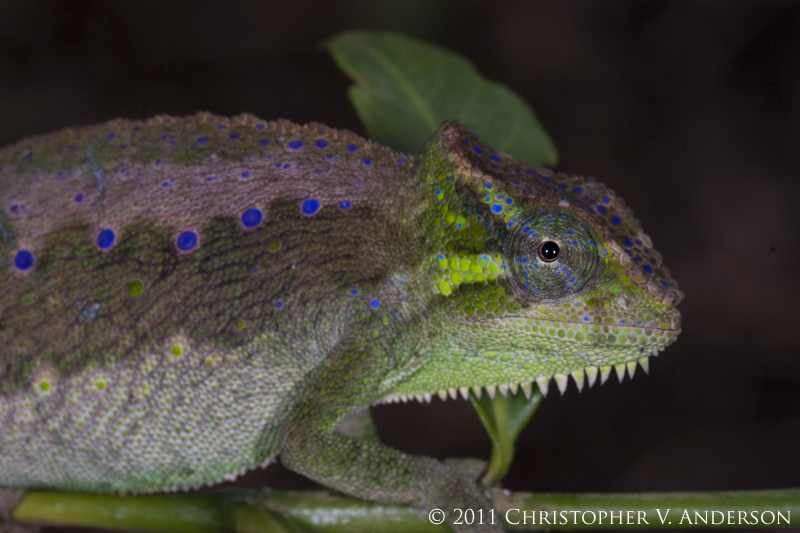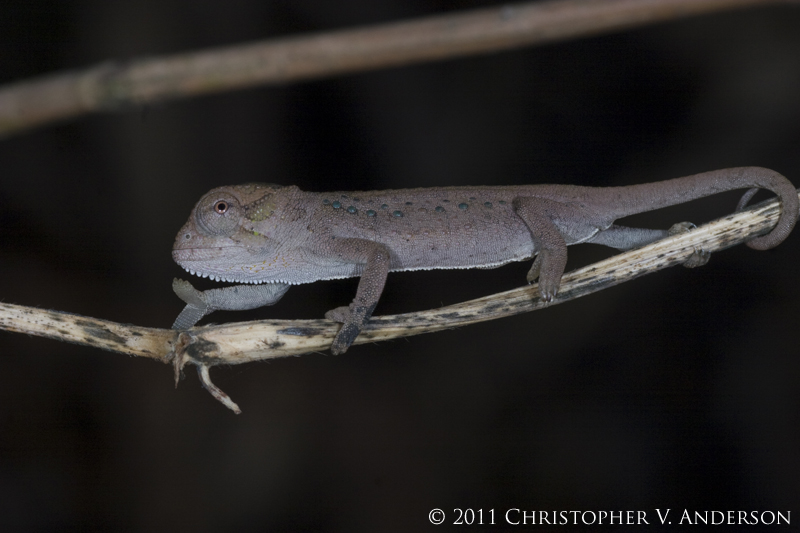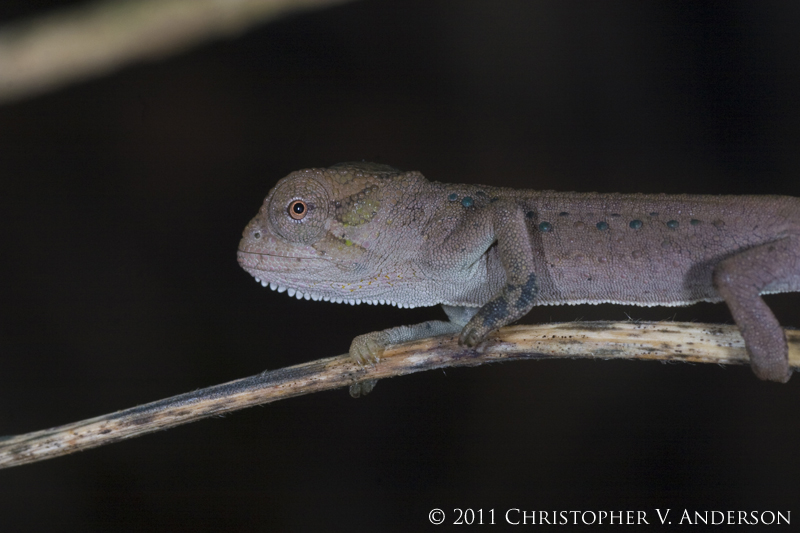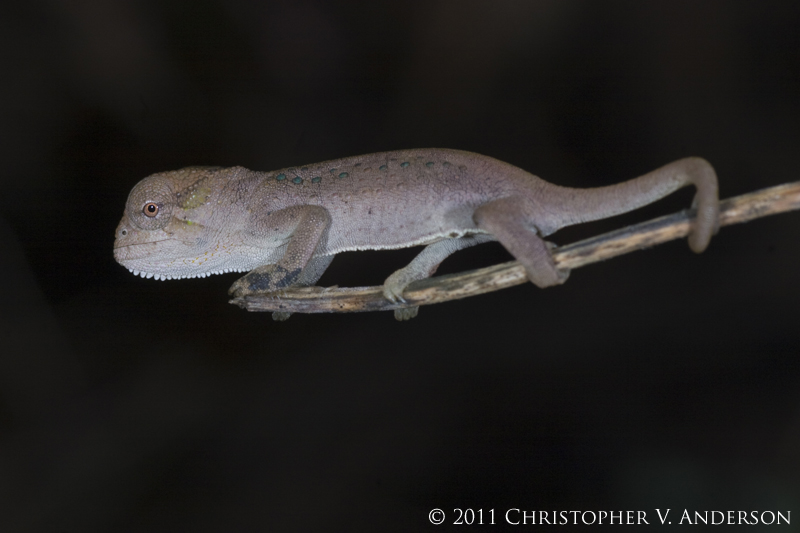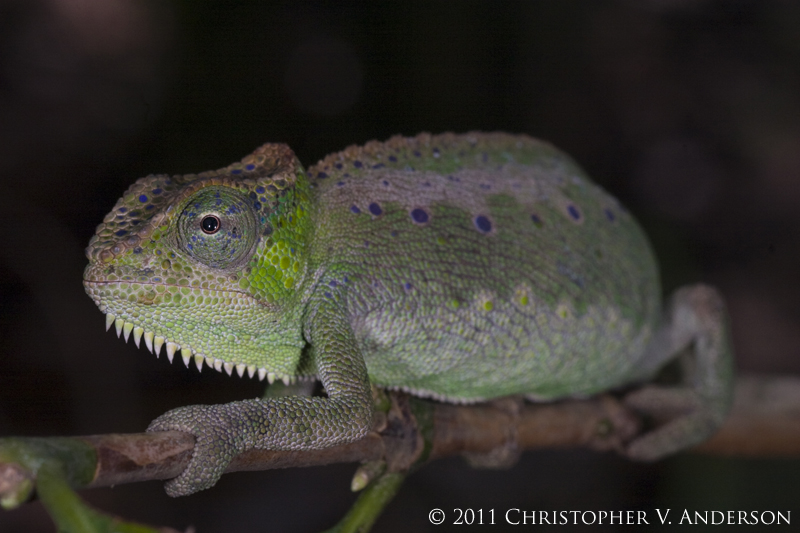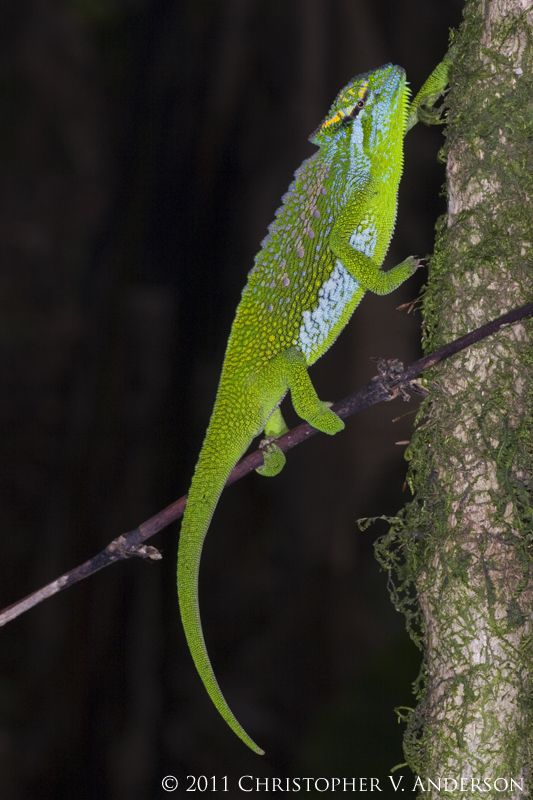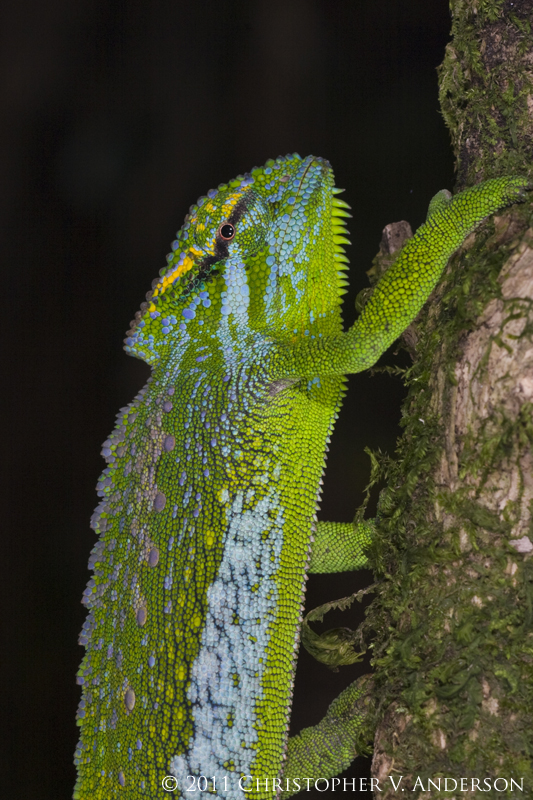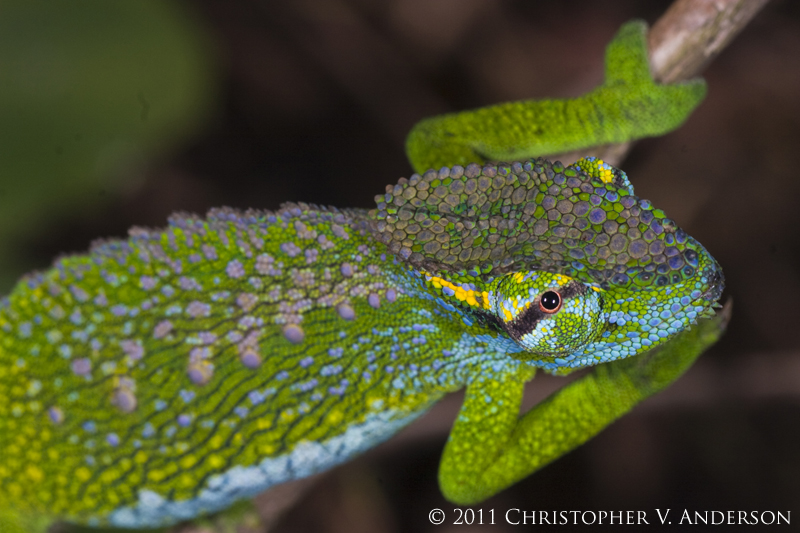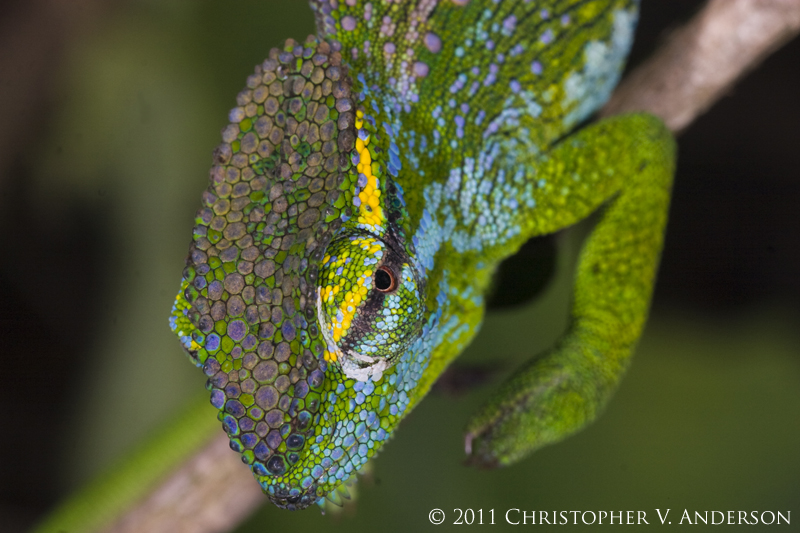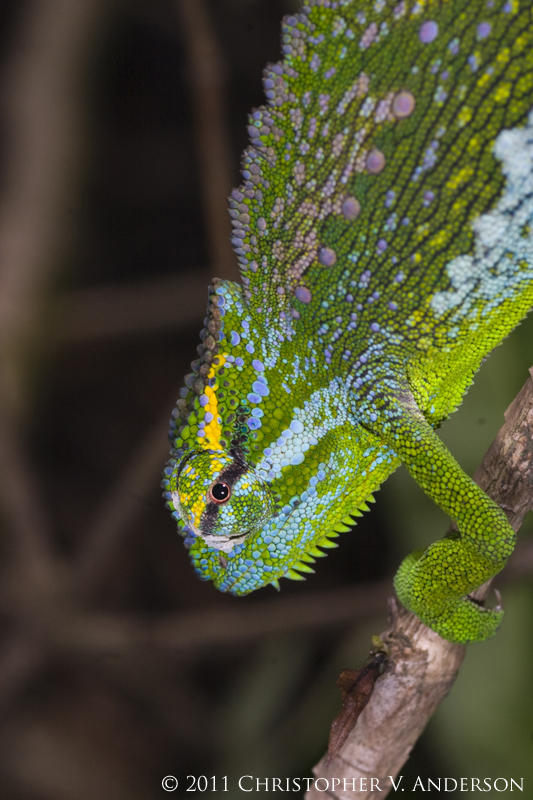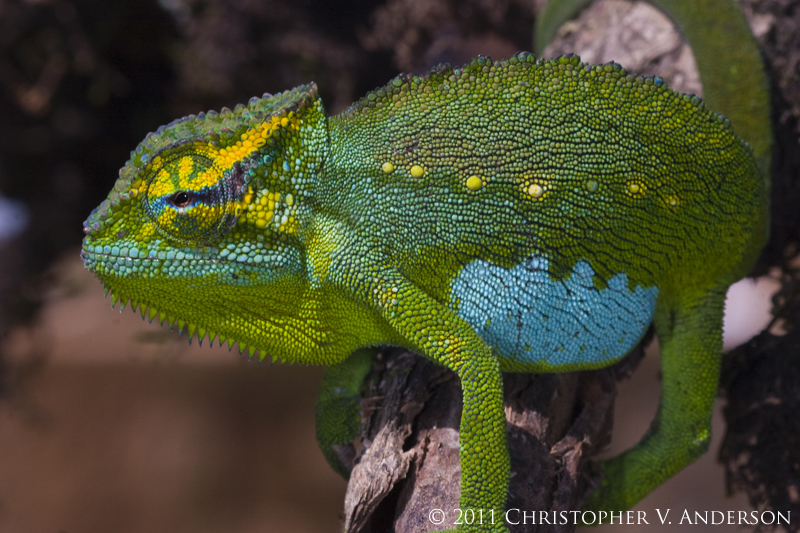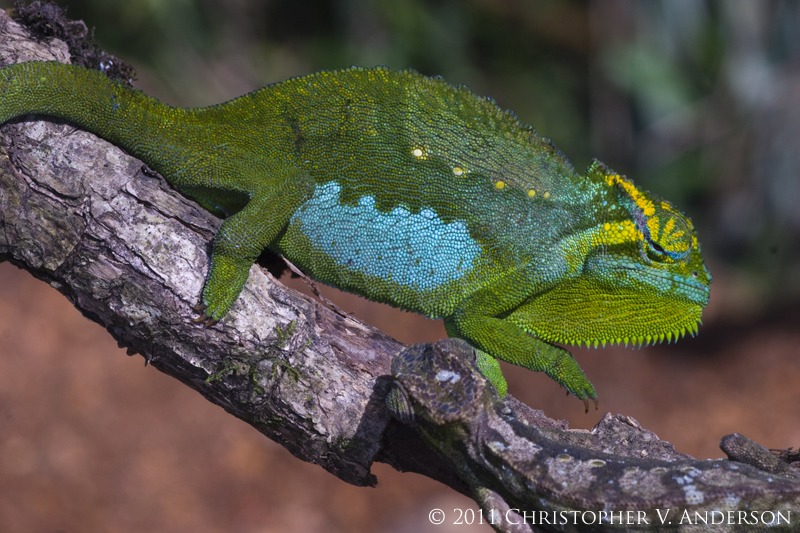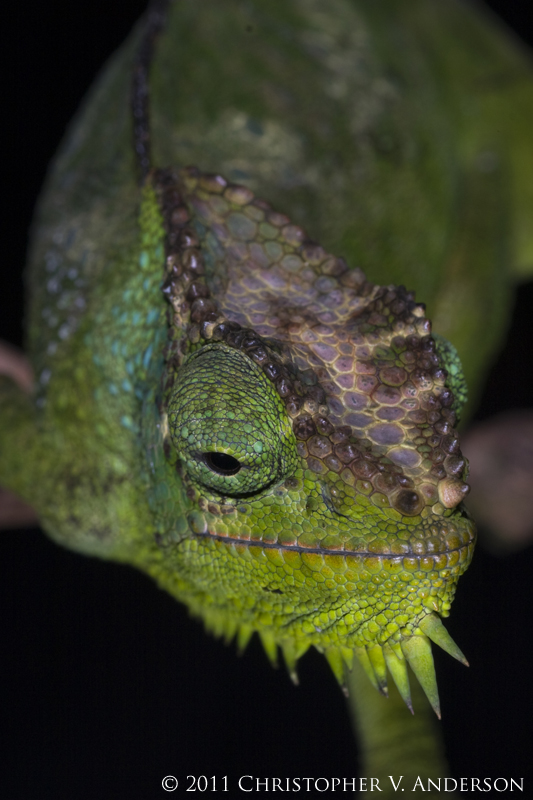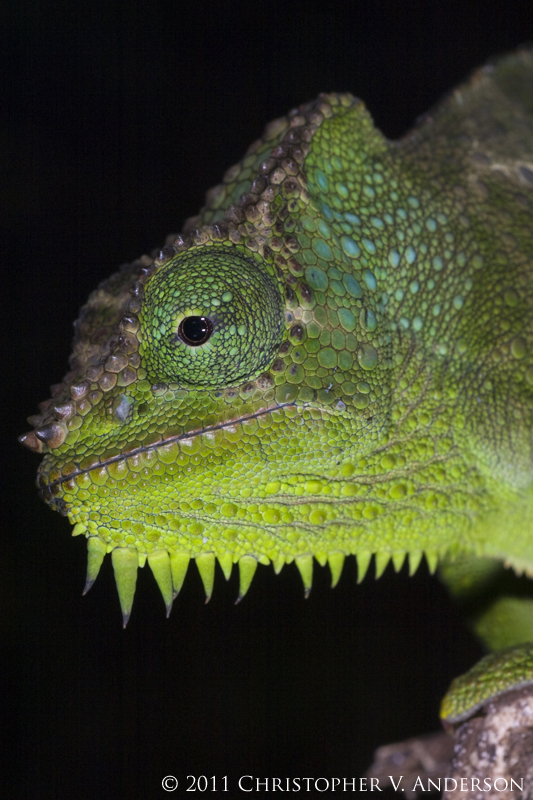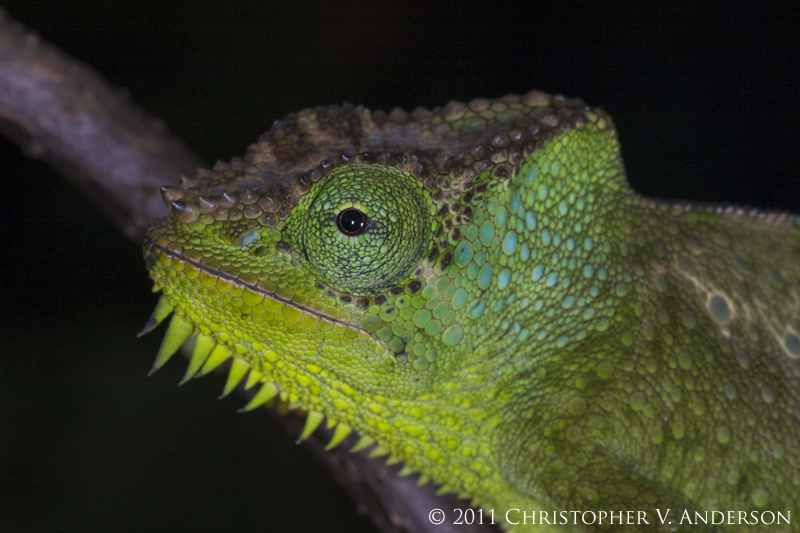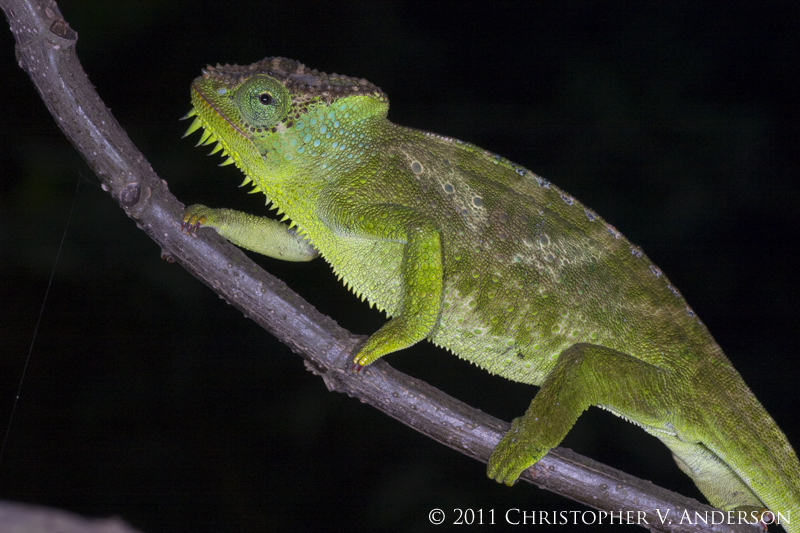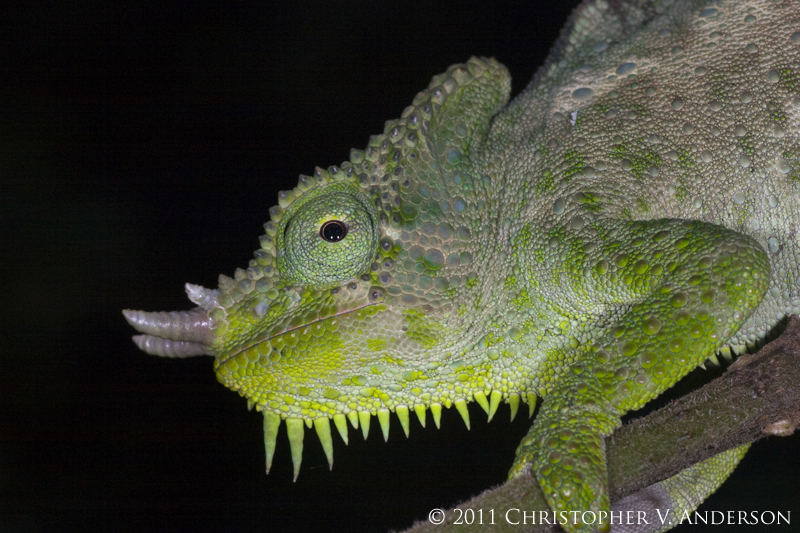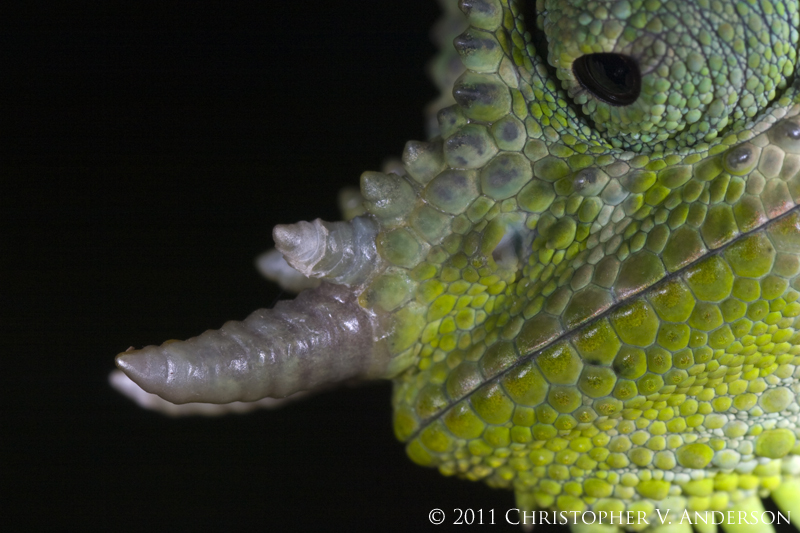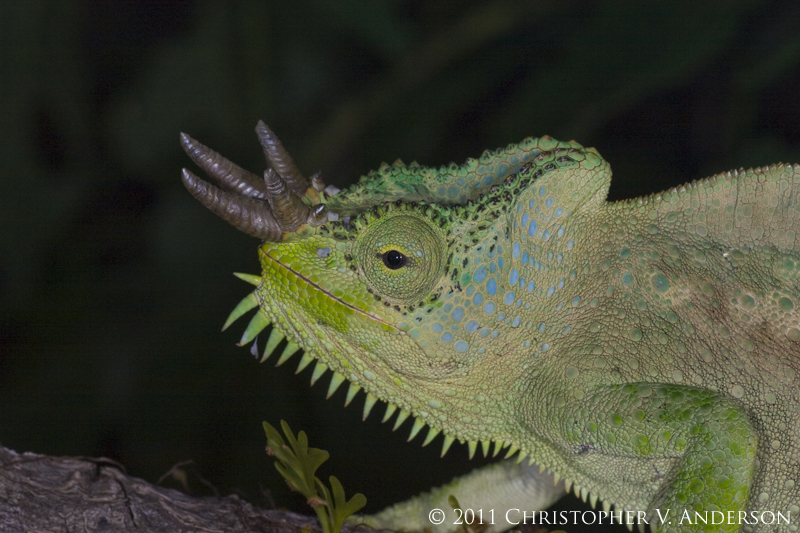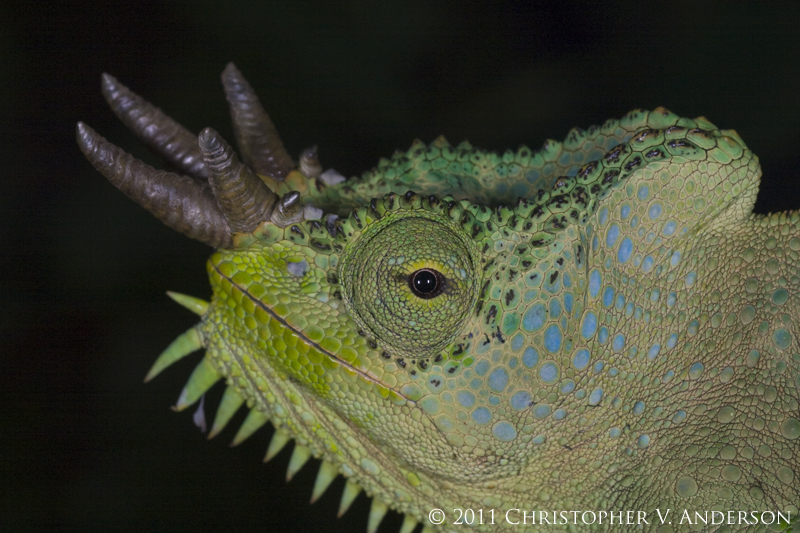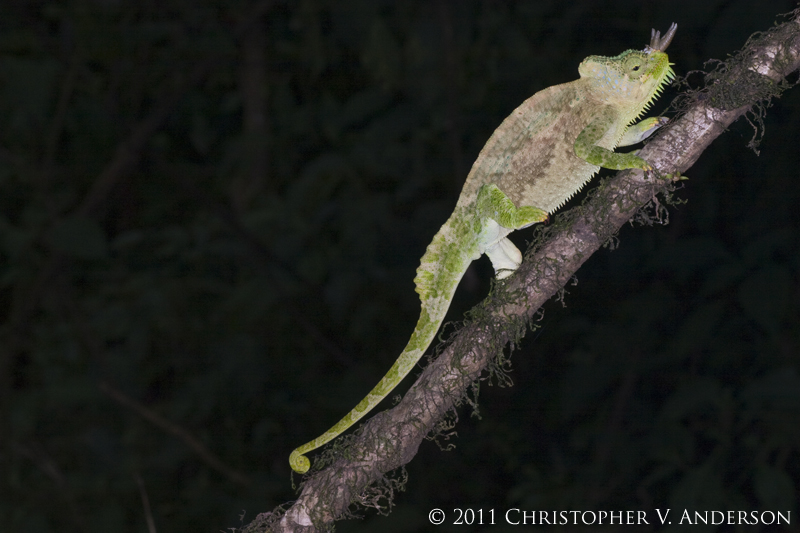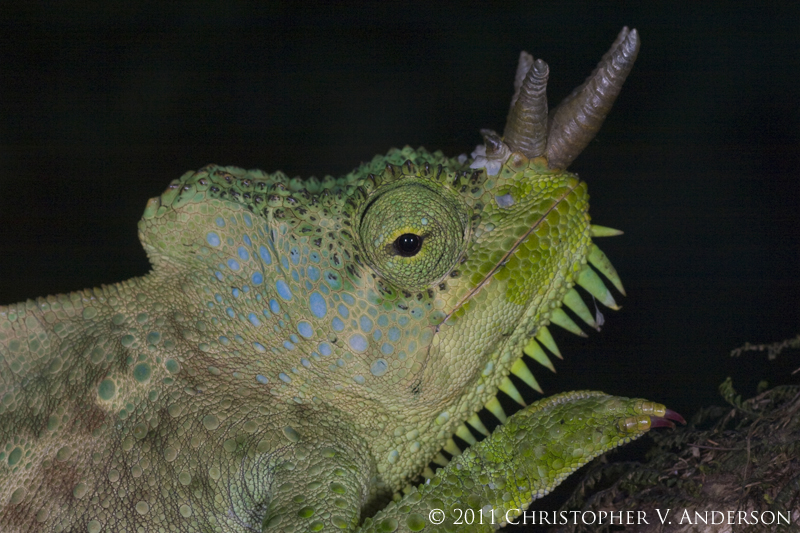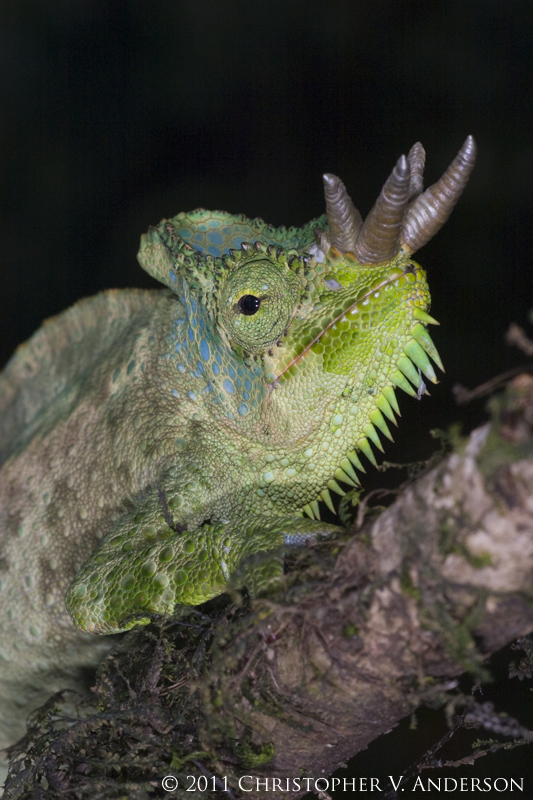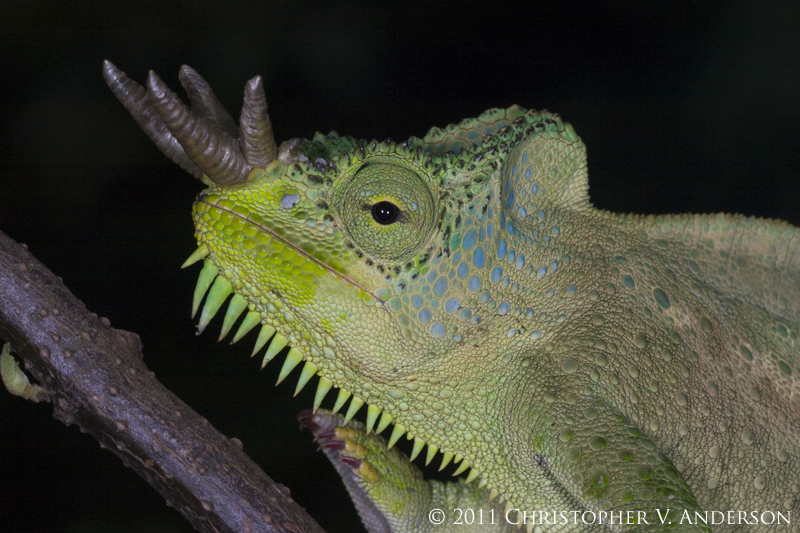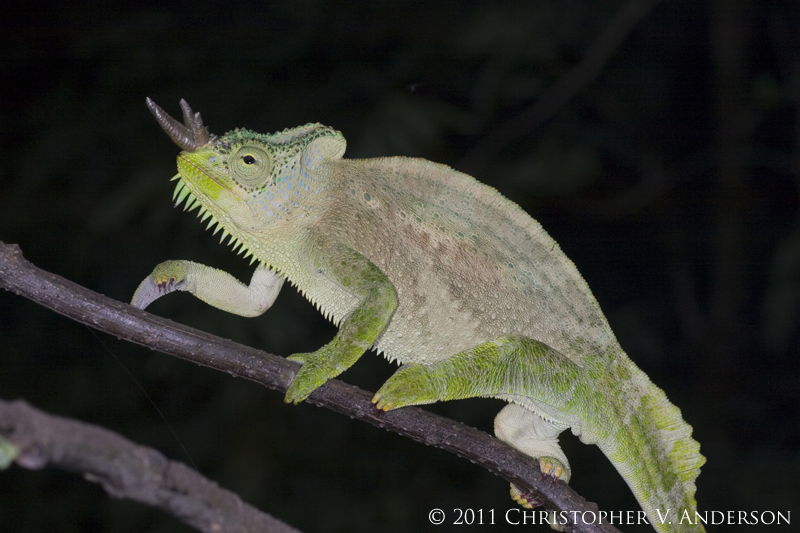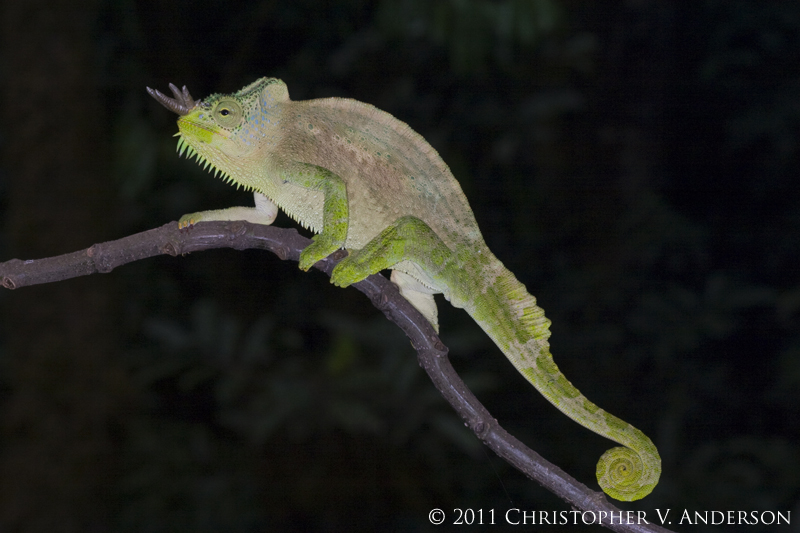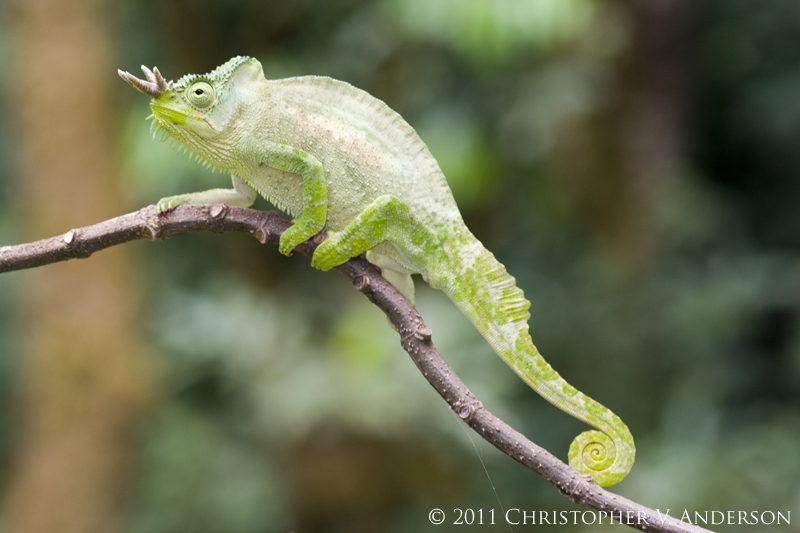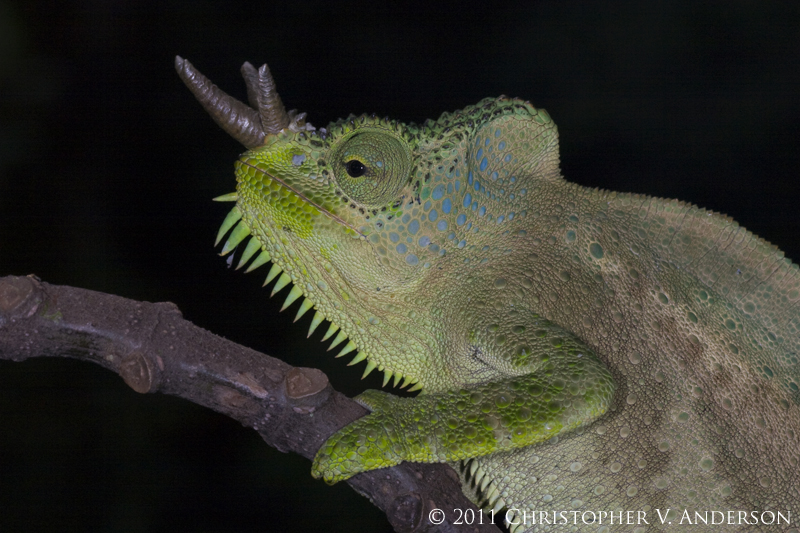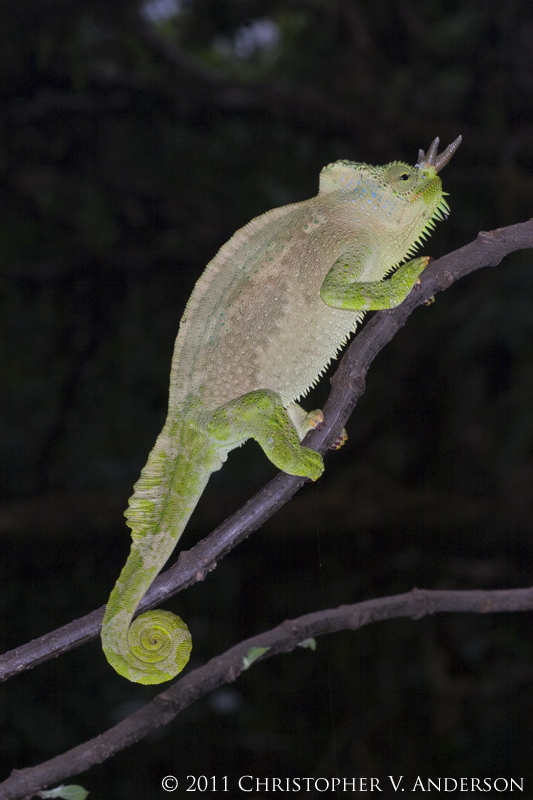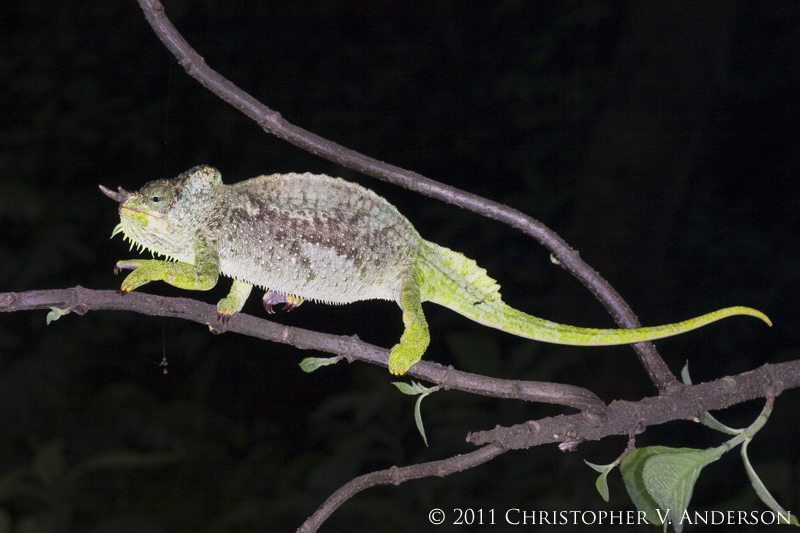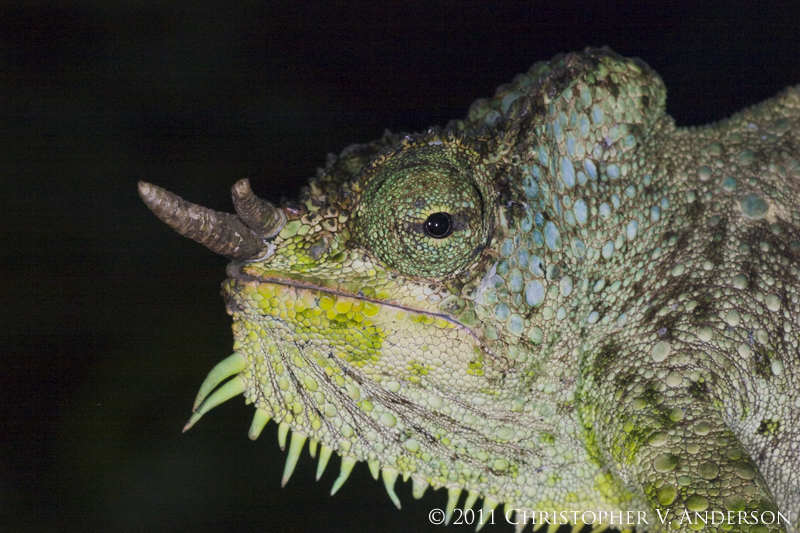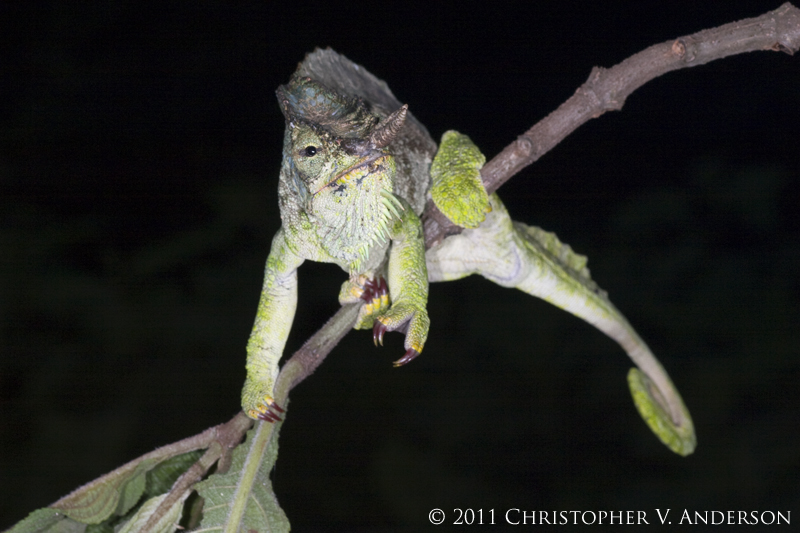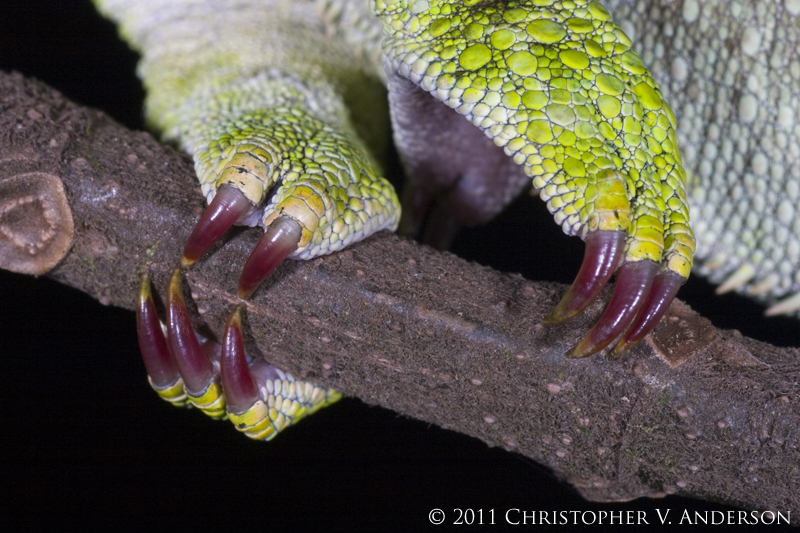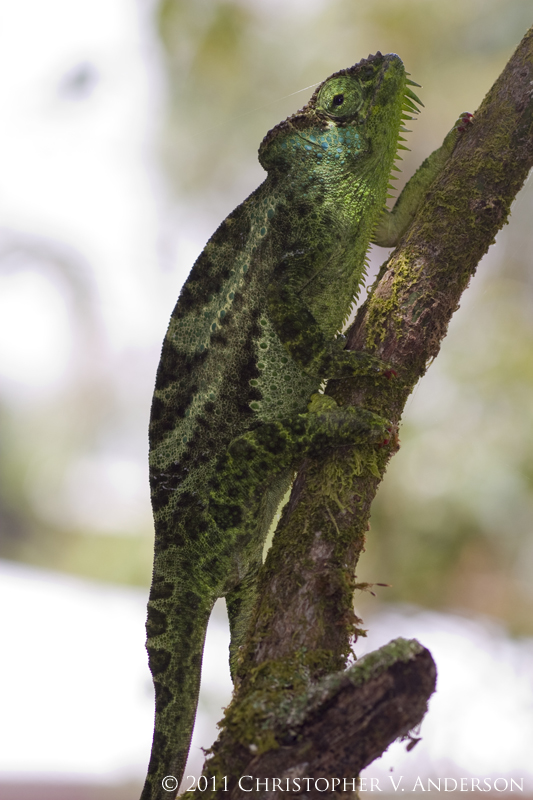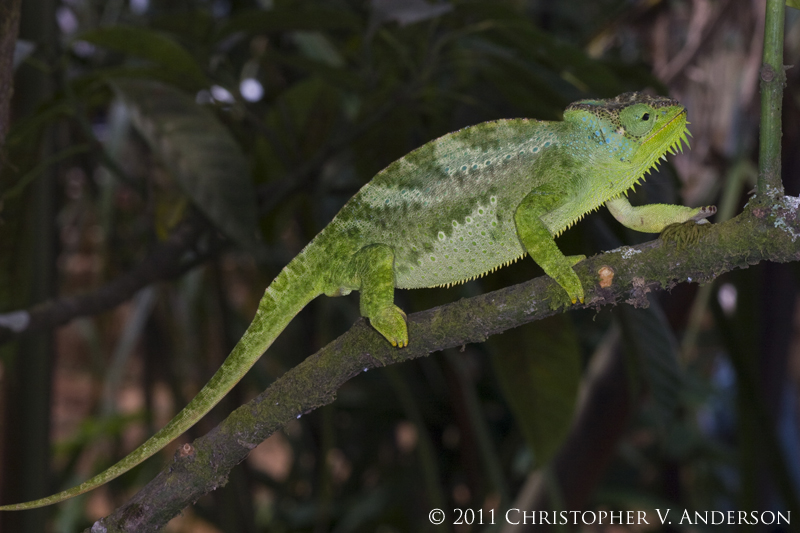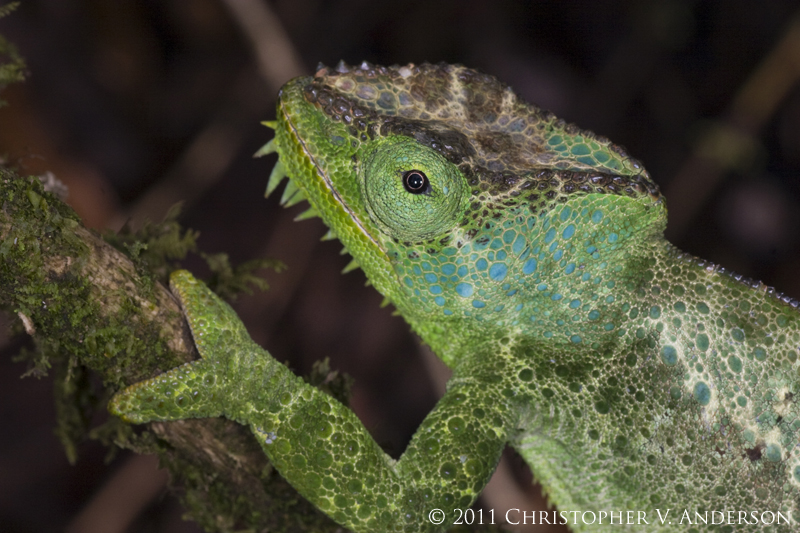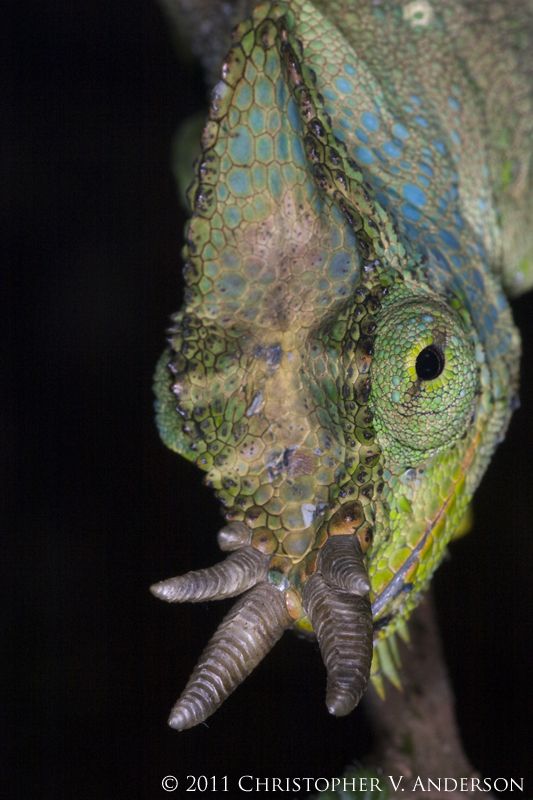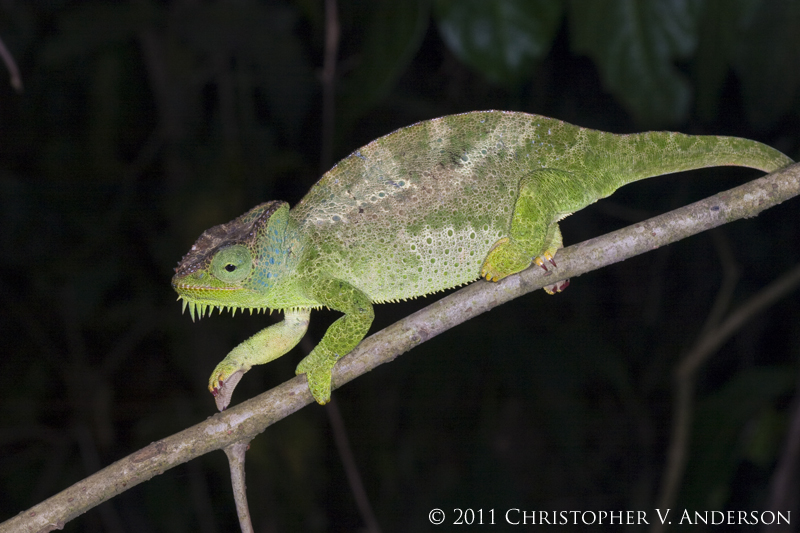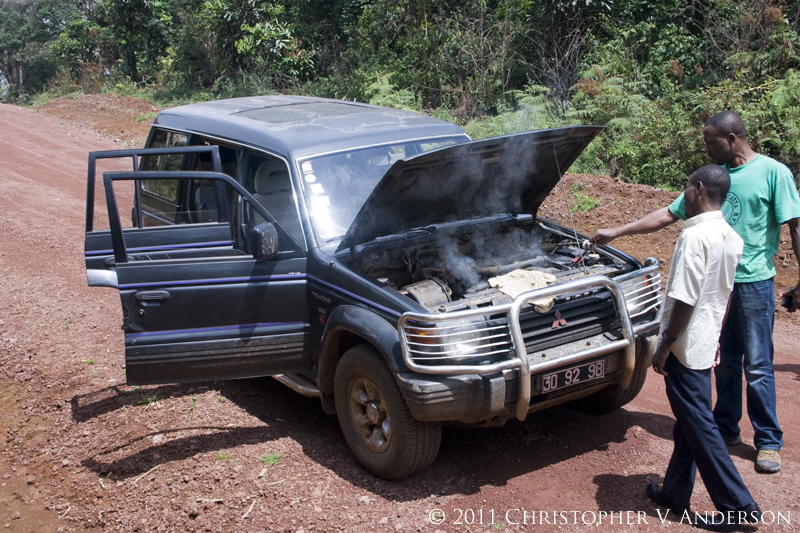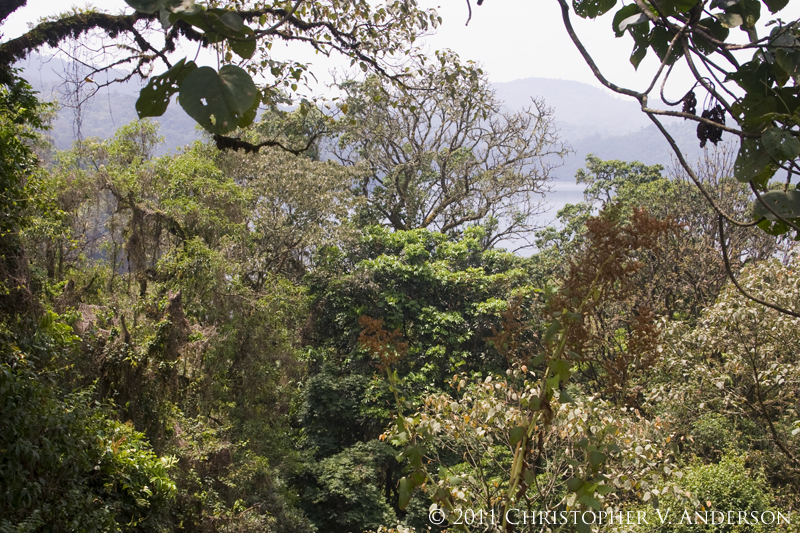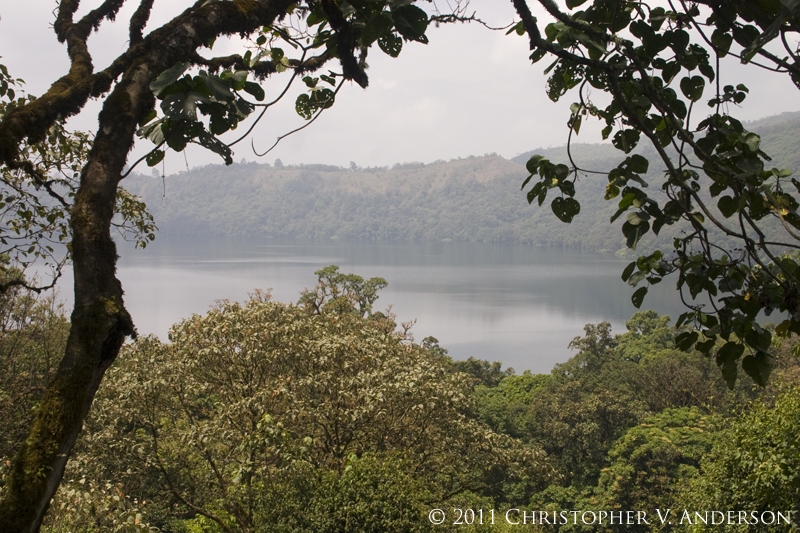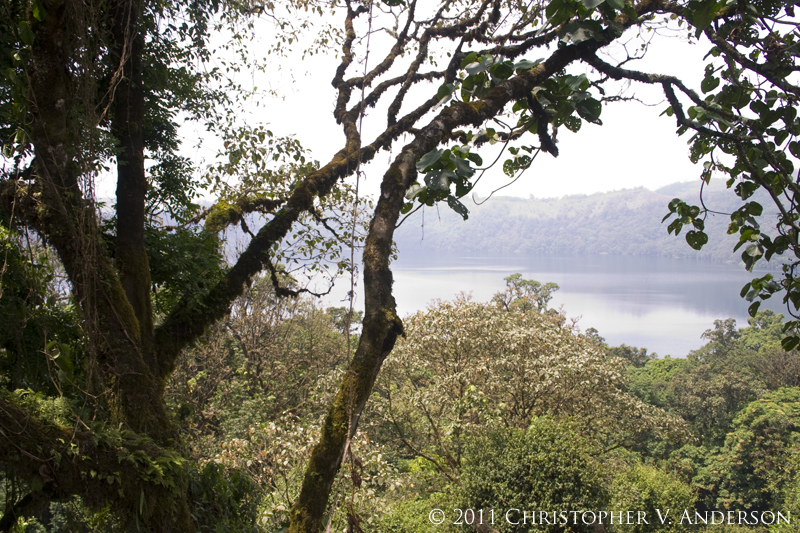Chris Anderson
Dr. House of Chameleons
This thread is the fourth on a series of threads outlining the Exo Terra Expedition to Cameroon I recently returned from. The first three threads in this series can be found here:
https://www.chameleonforums.com/exo-terra-cameroon-expedition-mount-cameroon-55779/
https://www.chameleonforums.com/exo-terra-cameroon-expedition-2-nyassosso-mount-kupe-56261/
https://www.chameleonforums.com/exo-terra-cameroon-expedition-3-mount-manengouba-56644/
After spending the first part of our trip in the Southwest Region of Cameroon, we left Bangem and headed toward the Northwest Region where we hoped to locate a couple different species from this area. We stopped for the night in Dschang where we discussed our plans for the rest of the trip.
We all were somewhat disappointed in being unsuccessful finding adult Trioceros quadricornis quadricornis in the Southwest Region. At this point in the trip we were supposed to leave Dschang the next day and go to Mount Bambutos where we were to spend a few days. Following Mount Bambutos, we were scheduled to proceed on to and spend a few days on Mount Oku before returning to Douala to return to Europe and the US. Unfortunately we had been told that Mount Bambutos was heavily deforested and in the absence of specific, current locale data on the chameleons from this mountain, we were concerned we would waste a lot of time trying to find specimens there. We further realized that the species on Mount Bambutos that we hoped to find were also located on Mount Oku, where we were told we should have no problem finding specimens. With this information, we decided to skip Mount Bambutos and continue immediately on to Mount Oku so that we could return to the Southwest Region in the hopes of still being able to find adult Trioceros quadricornis quadricornis before leaving.
The next morning we drove to the town of Kumbo and the day after that, to Oku Village on Mount Oku. In Oku Village, we visited the chief to arrange to visit one of their sacred forests to look for chameleons. The chief's palace was adorned with a nice mural that included a chameleon:


On the way to the village's sacred forest at approximately 2200m in elevation we located six Trioceros serratus (Central Peacock Chameleons), a species previous referred to as Trioceros wiedersheimi wiederheimi, in the hedges and bushes in the village and a number of additional specimens along the forest edge.
After entering the sacred forest, we were pleased to locate four Trioceros quadricornis gracilior (Northern Four-horned Chameleons), including a very large, old male that had lost the horns on one side of his rostrum.
We weren't able to stay after dark to look for additional specimens the first night because the villagers said they had to get the god's permission for us to visit after dark so we returned to our hotel hoping to be able to visit the sacred forest the next night. That night around out hotel we were able to locate ten additional T. serratus and two T. q. gracilior. I was surprised to find T. q. gracilior in the village as they are typically associated with primary forest but they appear to occur in this degraded habitat in low concentrations.
The next day we were able to return to the sacred forest for dark. In the afternoon we located three additional T. serratus and another T. q. gracilior. After dark, we hiked around for an hour or so and located four more T. q. gracilior and two more T. serratus.
Trioceros serratus:













https://www.chameleonforums.com/exo-terra-cameroon-expedition-mount-cameroon-55779/
https://www.chameleonforums.com/exo-terra-cameroon-expedition-2-nyassosso-mount-kupe-56261/
https://www.chameleonforums.com/exo-terra-cameroon-expedition-3-mount-manengouba-56644/
After spending the first part of our trip in the Southwest Region of Cameroon, we left Bangem and headed toward the Northwest Region where we hoped to locate a couple different species from this area. We stopped for the night in Dschang where we discussed our plans for the rest of the trip.
We all were somewhat disappointed in being unsuccessful finding adult Trioceros quadricornis quadricornis in the Southwest Region. At this point in the trip we were supposed to leave Dschang the next day and go to Mount Bambutos where we were to spend a few days. Following Mount Bambutos, we were scheduled to proceed on to and spend a few days on Mount Oku before returning to Douala to return to Europe and the US. Unfortunately we had been told that Mount Bambutos was heavily deforested and in the absence of specific, current locale data on the chameleons from this mountain, we were concerned we would waste a lot of time trying to find specimens there. We further realized that the species on Mount Bambutos that we hoped to find were also located on Mount Oku, where we were told we should have no problem finding specimens. With this information, we decided to skip Mount Bambutos and continue immediately on to Mount Oku so that we could return to the Southwest Region in the hopes of still being able to find adult Trioceros quadricornis quadricornis before leaving.
The next morning we drove to the town of Kumbo and the day after that, to Oku Village on Mount Oku. In Oku Village, we visited the chief to arrange to visit one of their sacred forests to look for chameleons. The chief's palace was adorned with a nice mural that included a chameleon:
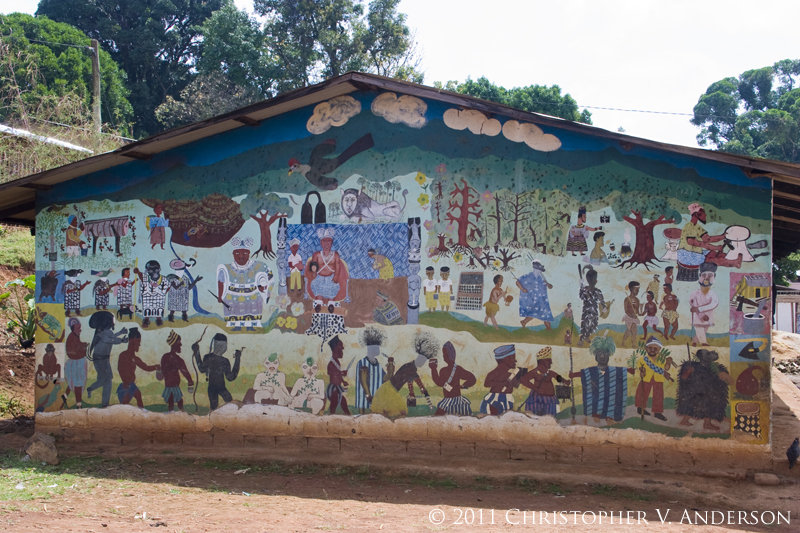
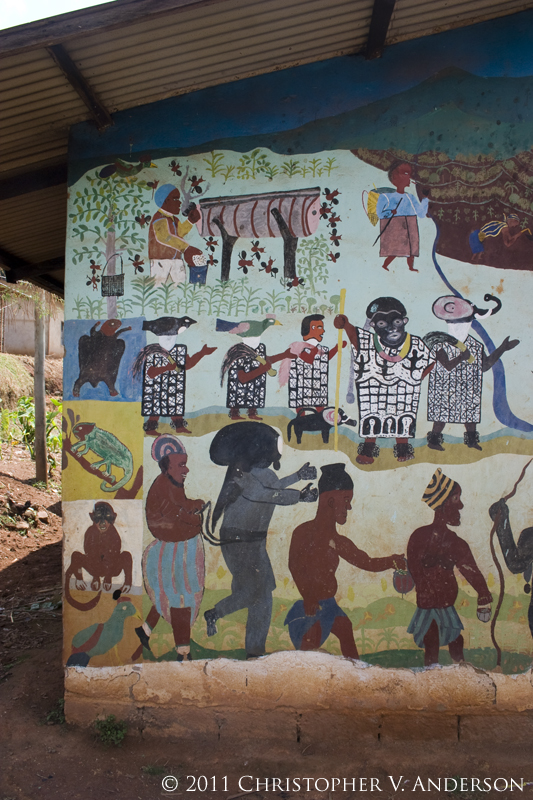
On the way to the village's sacred forest at approximately 2200m in elevation we located six Trioceros serratus (Central Peacock Chameleons), a species previous referred to as Trioceros wiedersheimi wiederheimi, in the hedges and bushes in the village and a number of additional specimens along the forest edge.
After entering the sacred forest, we were pleased to locate four Trioceros quadricornis gracilior (Northern Four-horned Chameleons), including a very large, old male that had lost the horns on one side of his rostrum.
We weren't able to stay after dark to look for additional specimens the first night because the villagers said they had to get the god's permission for us to visit after dark so we returned to our hotel hoping to be able to visit the sacred forest the next night. That night around out hotel we were able to locate ten additional T. serratus and two T. q. gracilior. I was surprised to find T. q. gracilior in the village as they are typically associated with primary forest but they appear to occur in this degraded habitat in low concentrations.
The next day we were able to return to the sacred forest for dark. In the afternoon we located three additional T. serratus and another T. q. gracilior. After dark, we hiked around for an hour or so and located four more T. q. gracilior and two more T. serratus.
Trioceros serratus:
